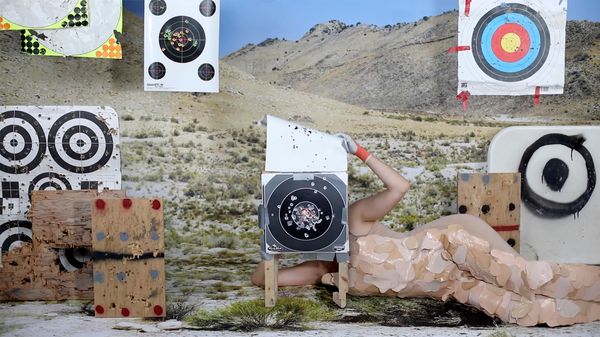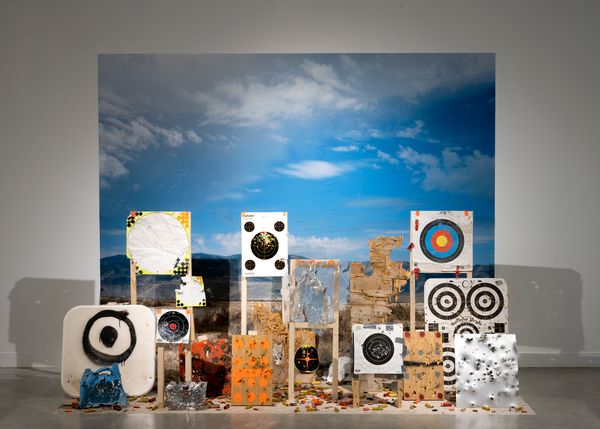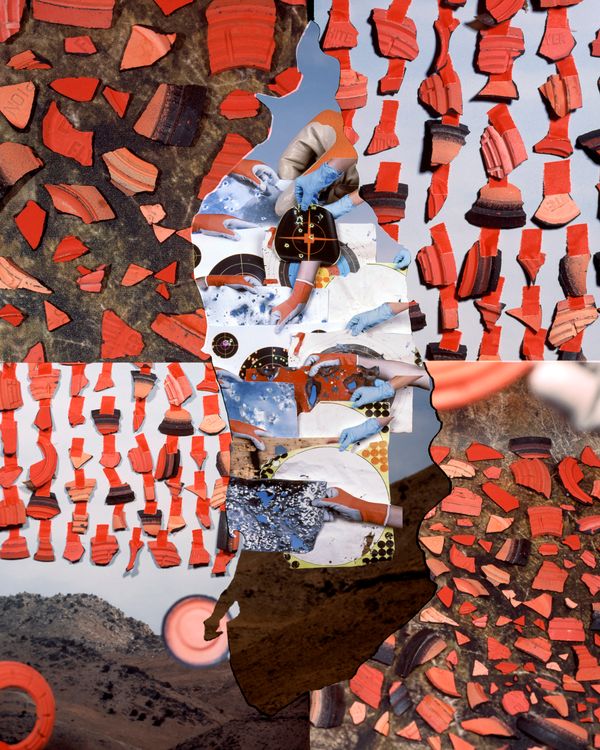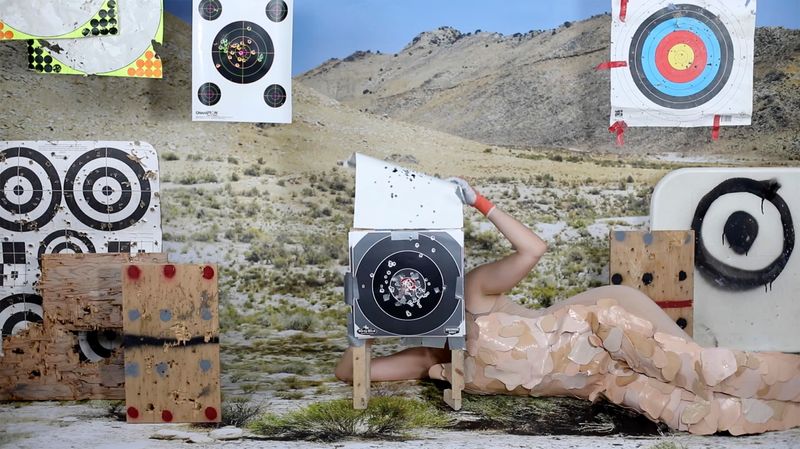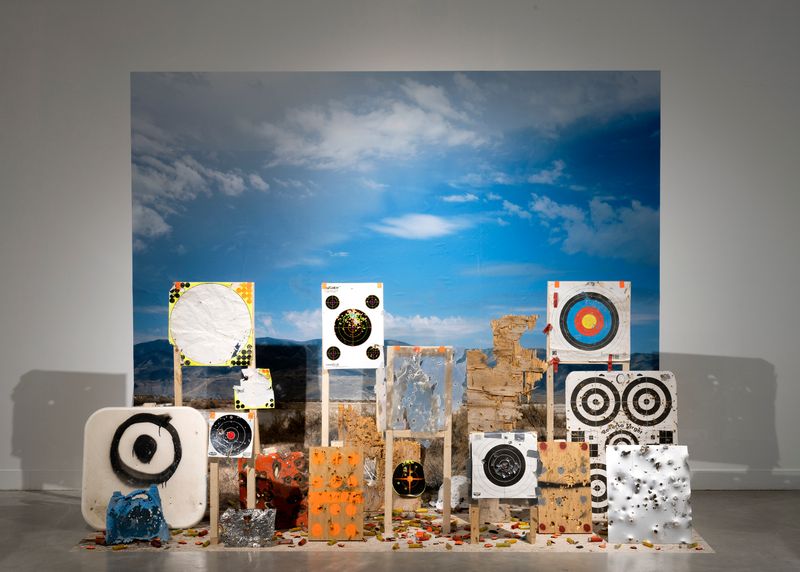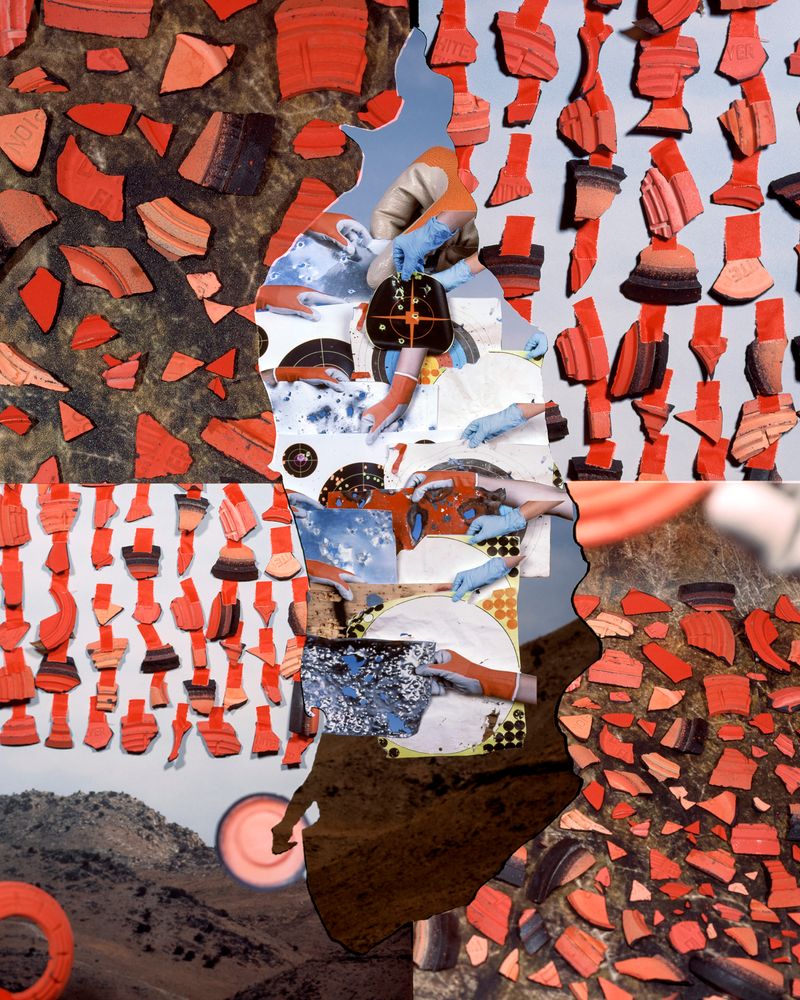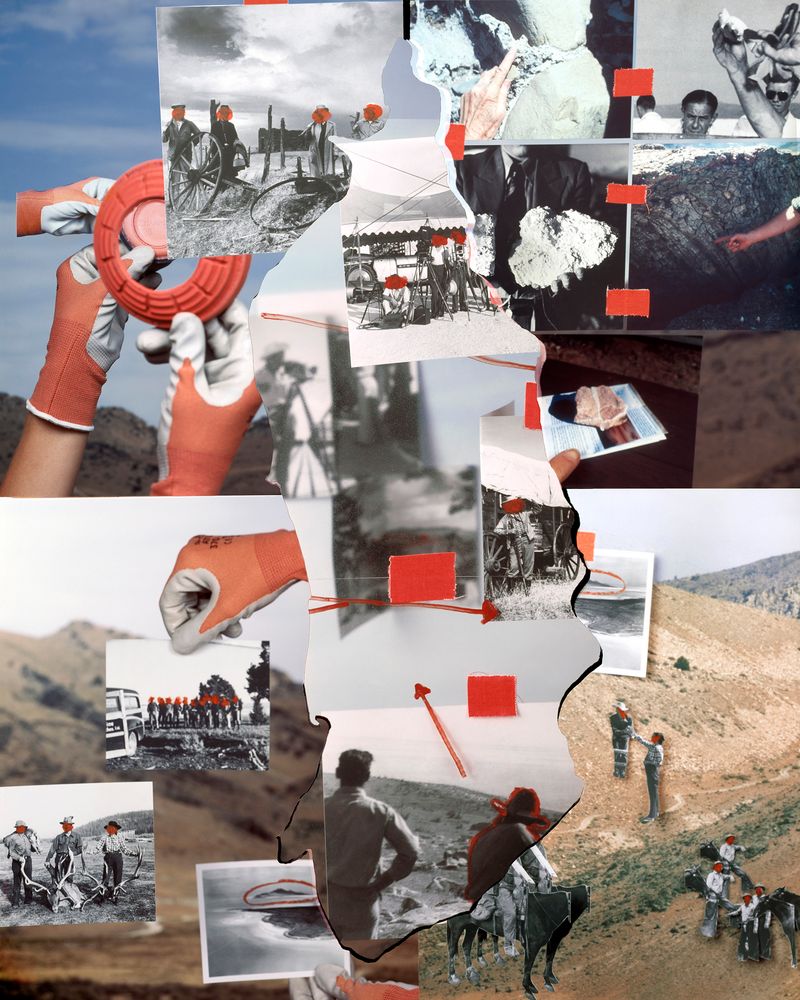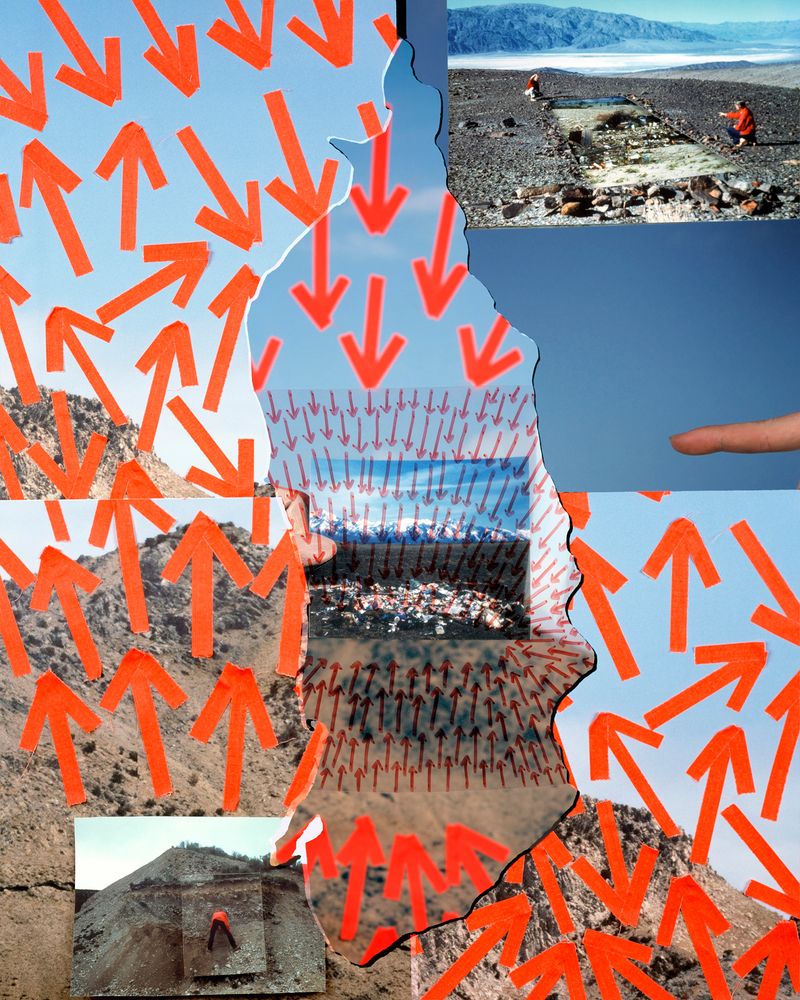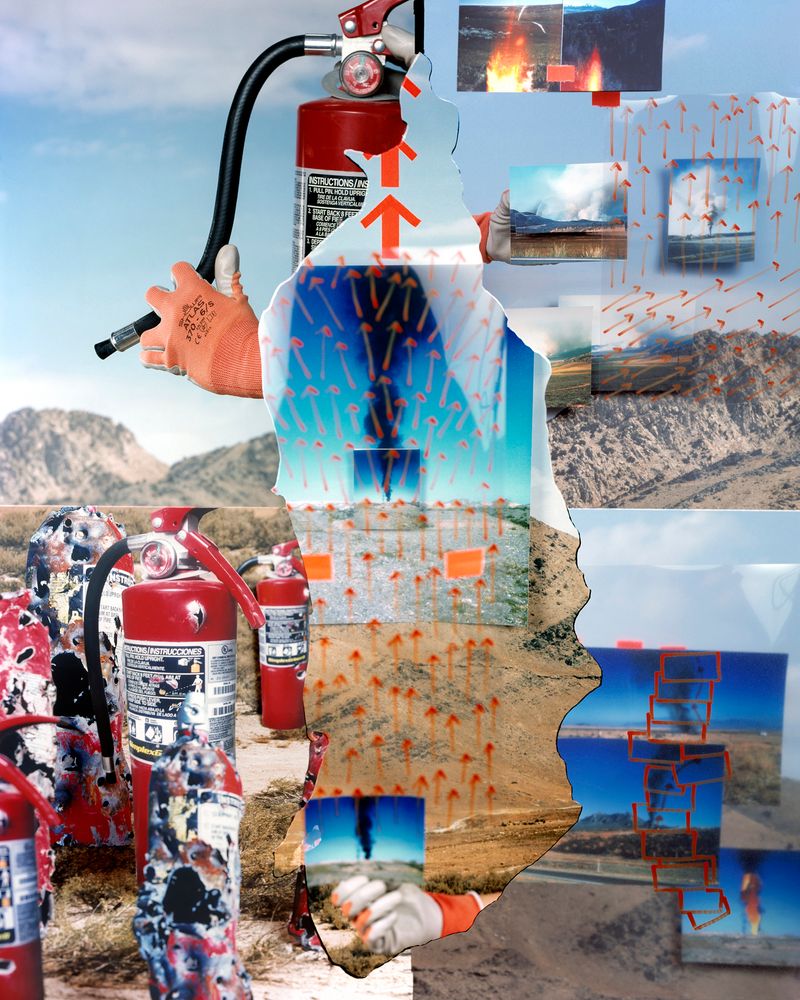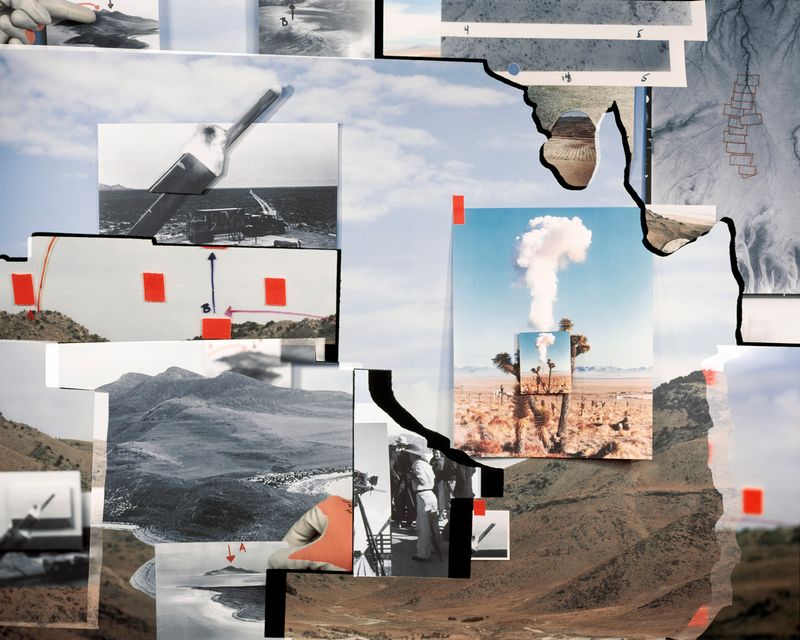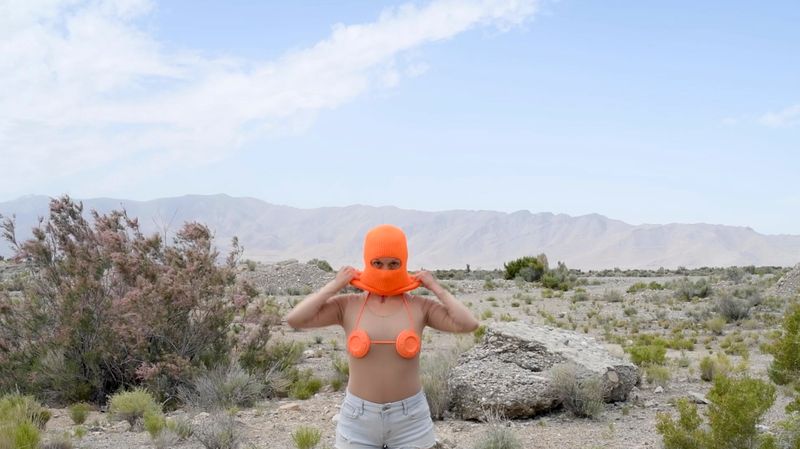High Visibility (Blaze Orange)
-
Dates2021 - Ongoing
-
Author
-
Recognition
High Visibility (Blaze Orange) is an ongoing project that uses debris collected from improvised gun ranges on public lands to create photographic installations that explore the intersections of photography, capitalism, and settler colonialism. Through the use of original images and archival photographs, maps, and diagrams from the University of Utah's J. Willard Marriott Library Special Collections, the work investigates the supporting role photography plays in the reification of nature, a process that codifies the criteria for land use based on sex, race, and class. I am interested in how these codes manifest themselves in behaviors observed in Utah's West Desert.
Much of Utah's West Desert, the ancestral home of the Goshute people, is managed by the Bureau of Land Management (BLM). The U.S. Government classifies these lands as "public lands." While the term "public" implies the land is open for all to use, significant acreage is privately leased to mining operations and cattle ranchers. The Dugway Proving Ground and the Utah Test and Training Range occupy nearly one-third of the West Desert's 7.7 million acres and are used as biological and chemical weapons testing grounds. The remaining areas of Utah’s West Desert are open to various uses, including relatively benign practices such as hiking, but many zones have been designated as official or, more often the case, unofficial gun ranges. These sites echo with gunfire, and the landscape is littered with bullet holes and casings, large household appliances, objects made of metal, glass, and plastic, and clay pigeons. These practices, which produce the waste used in the photographs, are representative of broader antisocial attitudes, shaped by concepts such as rugged individualism and manifest destiny, that perpetuate colonial ideologies which undermine the goals of egalitarianism and environmentalism.
The work takes its title from the color of the most conspicuous type of debris found—blaze orange clay pigeons. These aerial targets are painted a highly saturated and synthetic orange, "blaze orange," to ensure they stand out against the azure sky on a clear day. The contrast produced between these complementary colors enables shooters to track the unnatural target more easily against the natural milieu. I see this dialectical relationship as symbolic of others at play in the work—natural/anthropogenic; visible/invisible; material/bureaucratic; prudent/reckless; sustainable/nihilistic.
